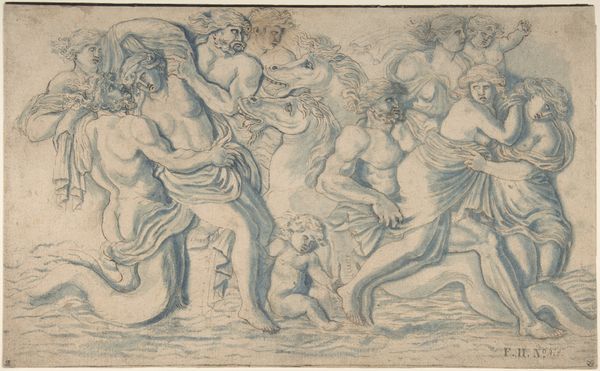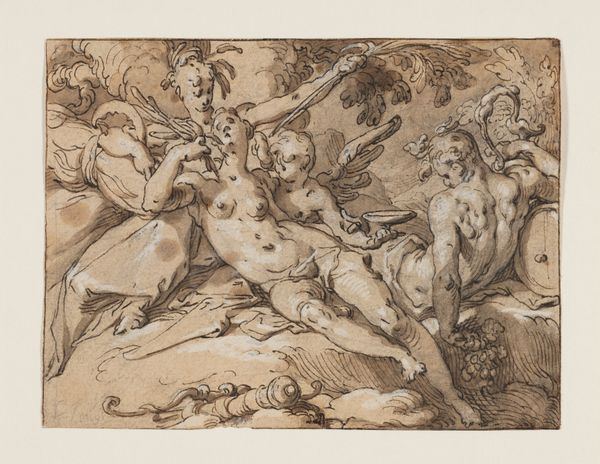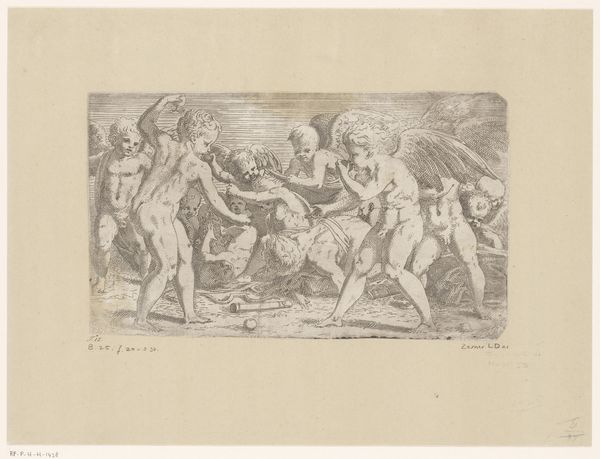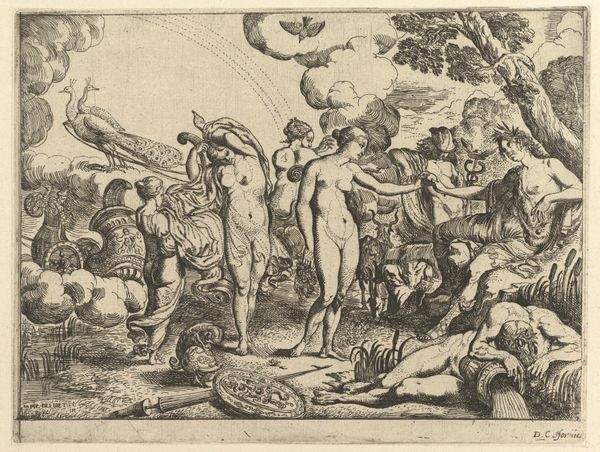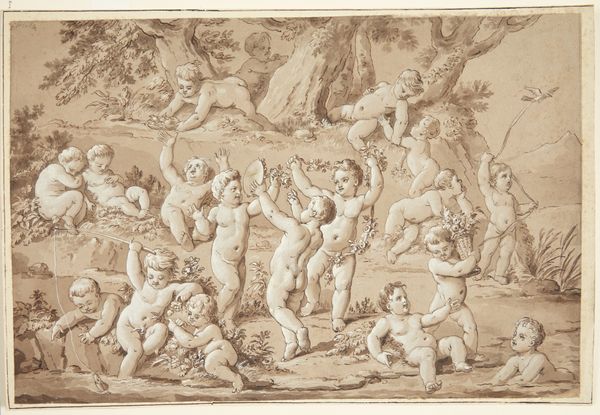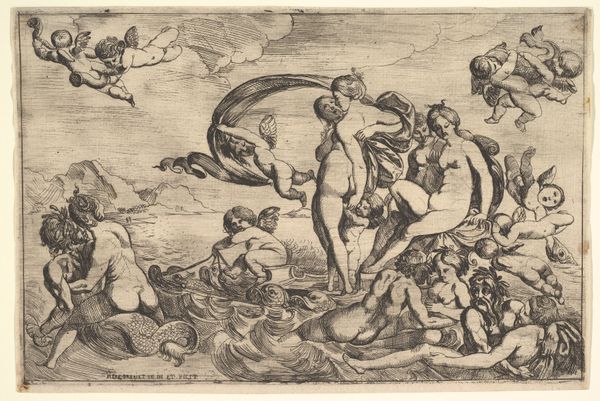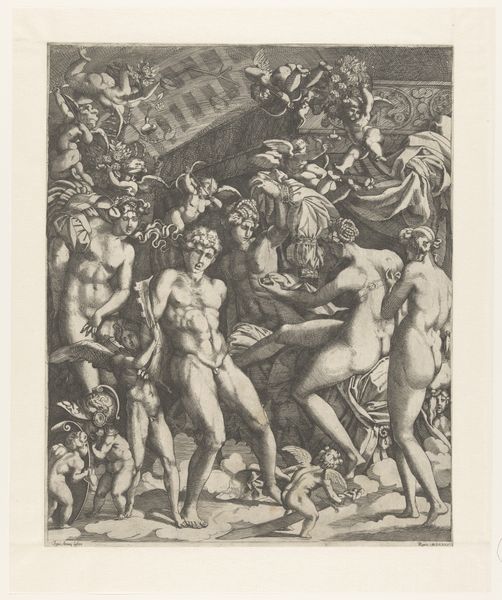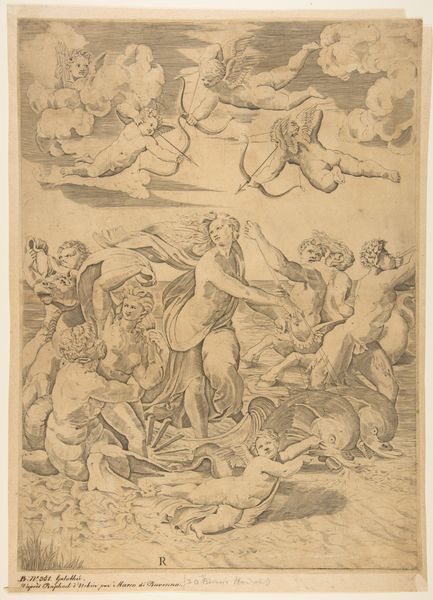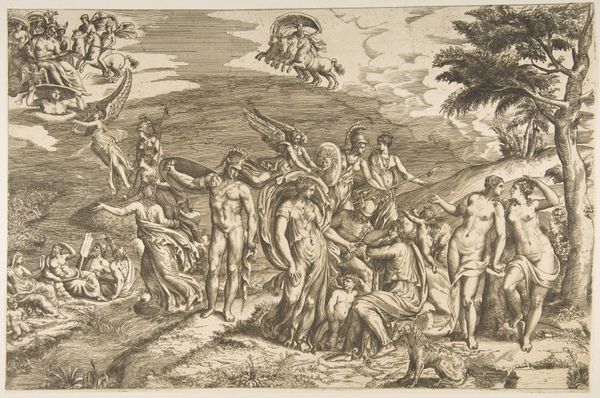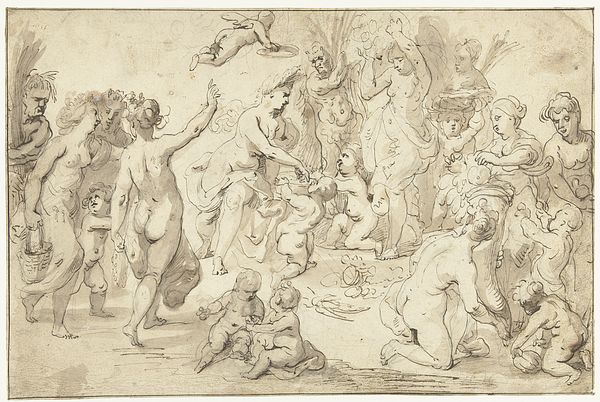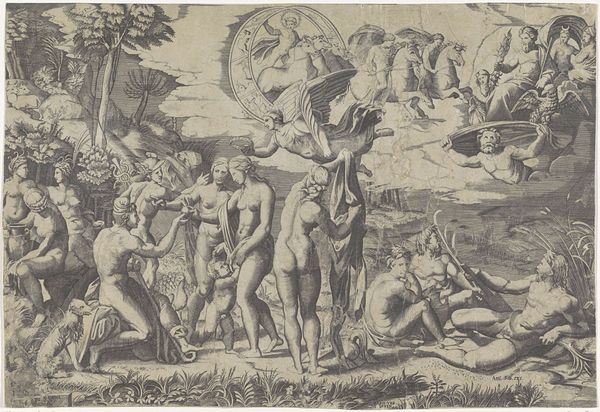
drawing, print, charcoal
#
drawing
# print
#
charcoal drawing
#
figuration
#
pencil drawing
#
romanticism
#
charcoal
#
history-painting
#
nude
Dimensions: sheet: 9 x 14 1/2 in. (22.9 x 36.8 cm)
Copyright: Public Domain
Curator: Sir Joseph Noël Paton created this charcoal drawing, "Milton's Comus," sometime between 1842 and 1848. Editor: It feels… tumultuous. The swirling figures are captured in a brown wash that contributes to the intensity, and almost feverish energy. What’s at the center of this apparent chaos? Curator: Indeed. Paton depicts a scene inspired by John Milton’s masque, Comus. Central to the composition is the figure of Comus himself, holding a chalice aloft. He’s framed by his orgiastic followers—various nymphs and revelers who give themself to earthly desire. Editor: Ah, so there is a ringleader. It does bring into stark focus the role of seduction and power dynamics. Seeing so many nude bodies surrounding this central figure, it’s hard not to consider the potential for coercion. Was Paton intentionally commenting on such abuse within patriarchal structures? Curator: I think more broadly, it explores themes of temptation and virtue. Note the Pre-Raphaelite movement influence in his highly stylized figures. And think of the contrast between the bacchanal taking place around Comus and the chaste Lady, the protagonist in Milton's narrative, who is notably absent here. Paton is contrasting pure virtue with corruption. Editor: Virtue is itself, of course, historically fraught when connected to discussions of the feminine ideal. Is Paton endorsing this idealized representation of the “Lady” and denouncing the “earthly” indulgences that are also expressions of women’s sexuality? Is it that binary that needs to be further scrutinized? Curator: He invites a rich aesthetic engagement, I’ll concede that, and certainly lends himself to layered analyses, which should invite such discussions. Look at the artist’s strategic placement of figures. Every pose directs the gaze towards Comus himself. The entire picture plane hinges on the protagonist. Editor: Your formalist take encourages me to revisit my reading. Perhaps I'm being overly critical and focused on the socio-political implications, potentially overshadowing Paton’s other intent: the mastery he has displayed in his handling of light and shadow, especially within this monochromatic medium. Curator: And there in lies the real enduring quality of art. Editor: True that, an opening into a diversity of interpretation and re-interpretation.
Comments
No comments
Be the first to comment and join the conversation on the ultimate creative platform.
